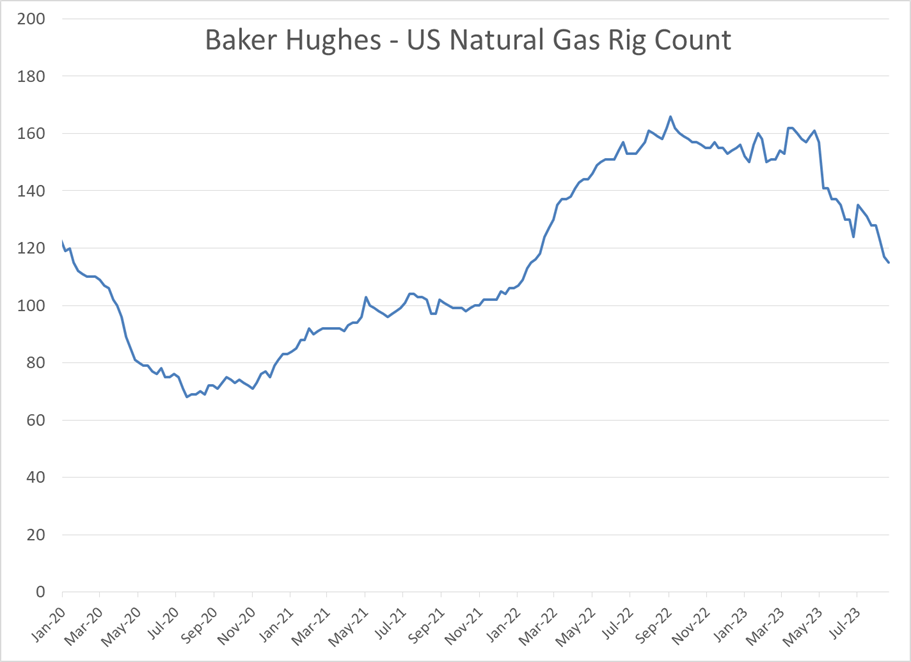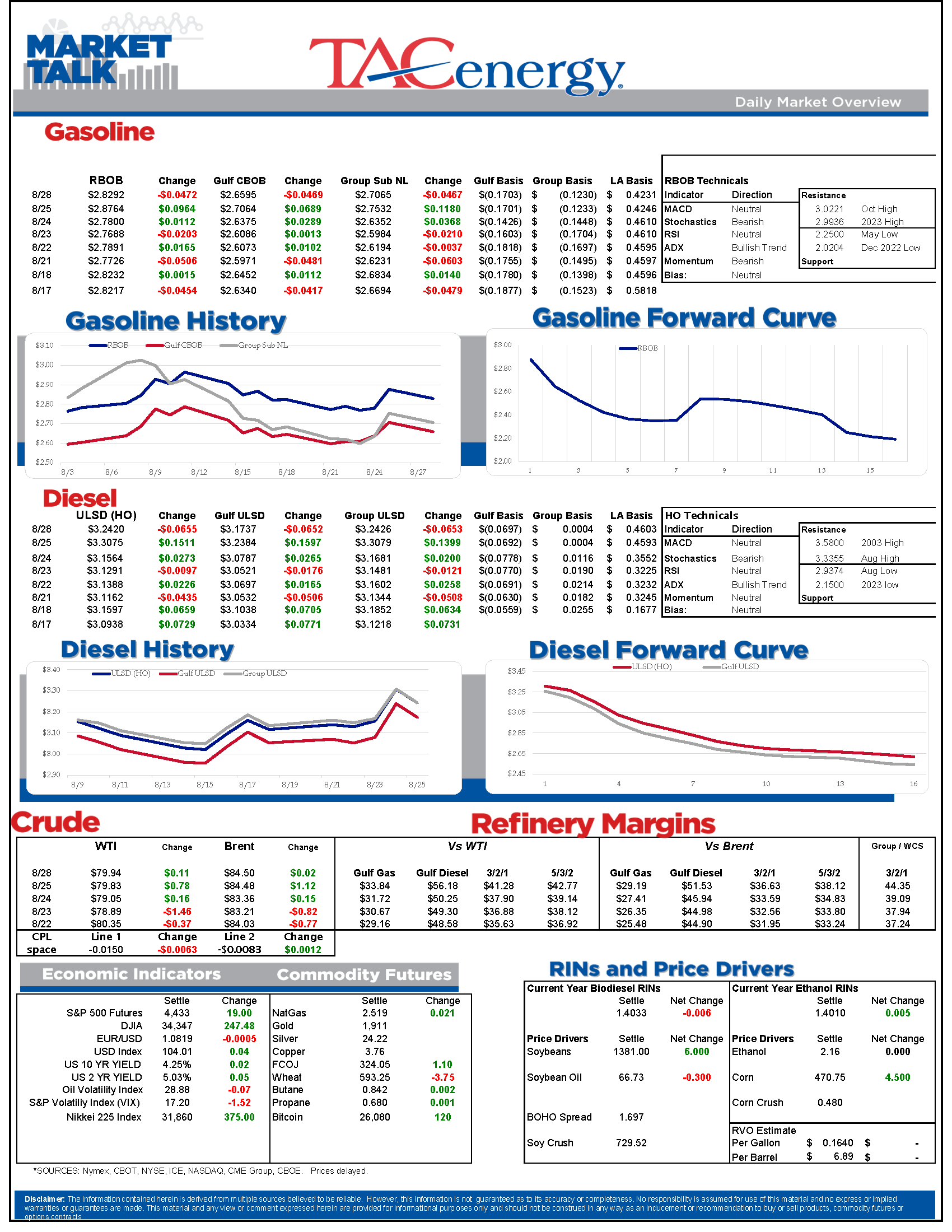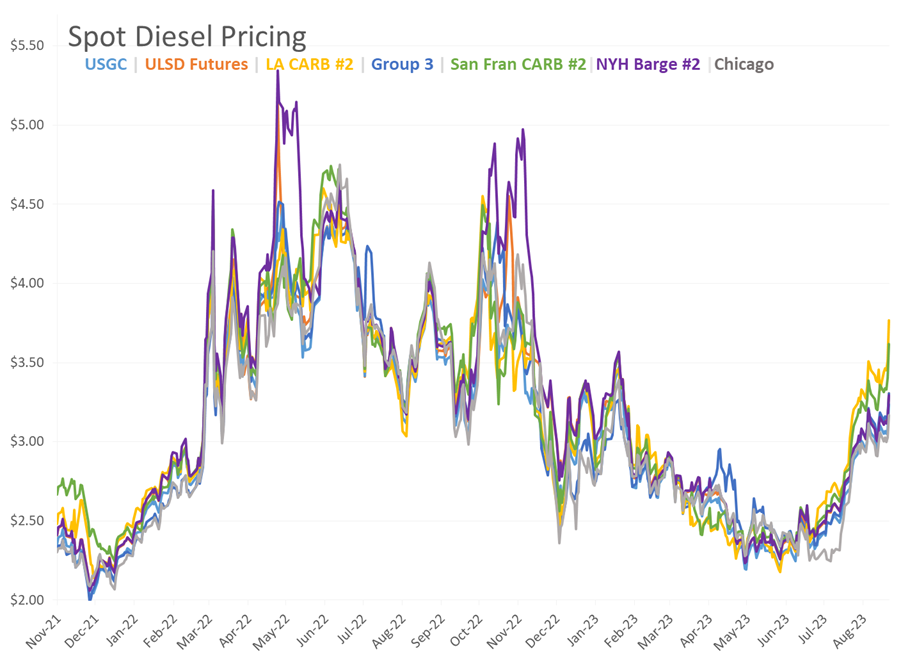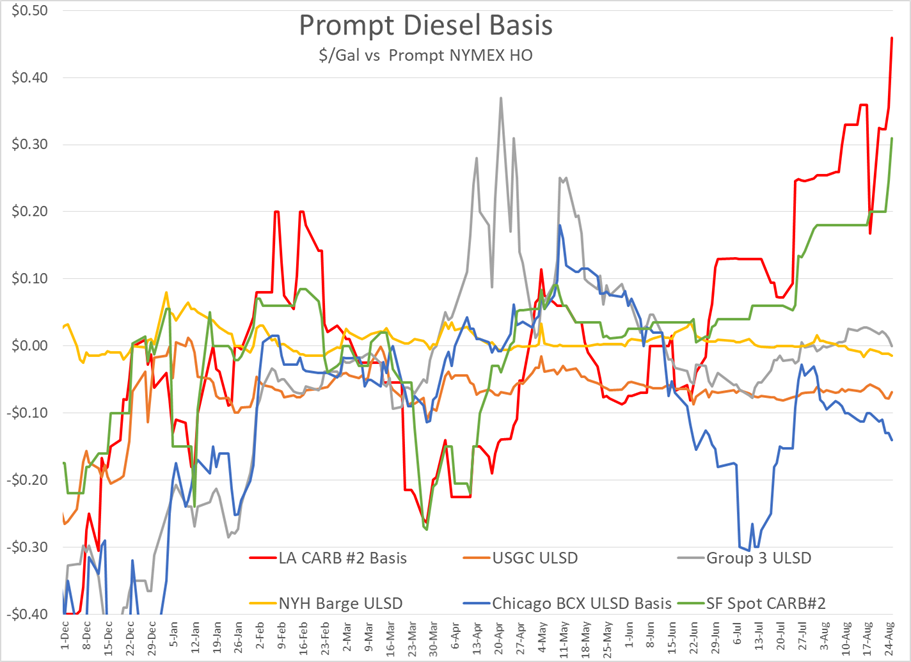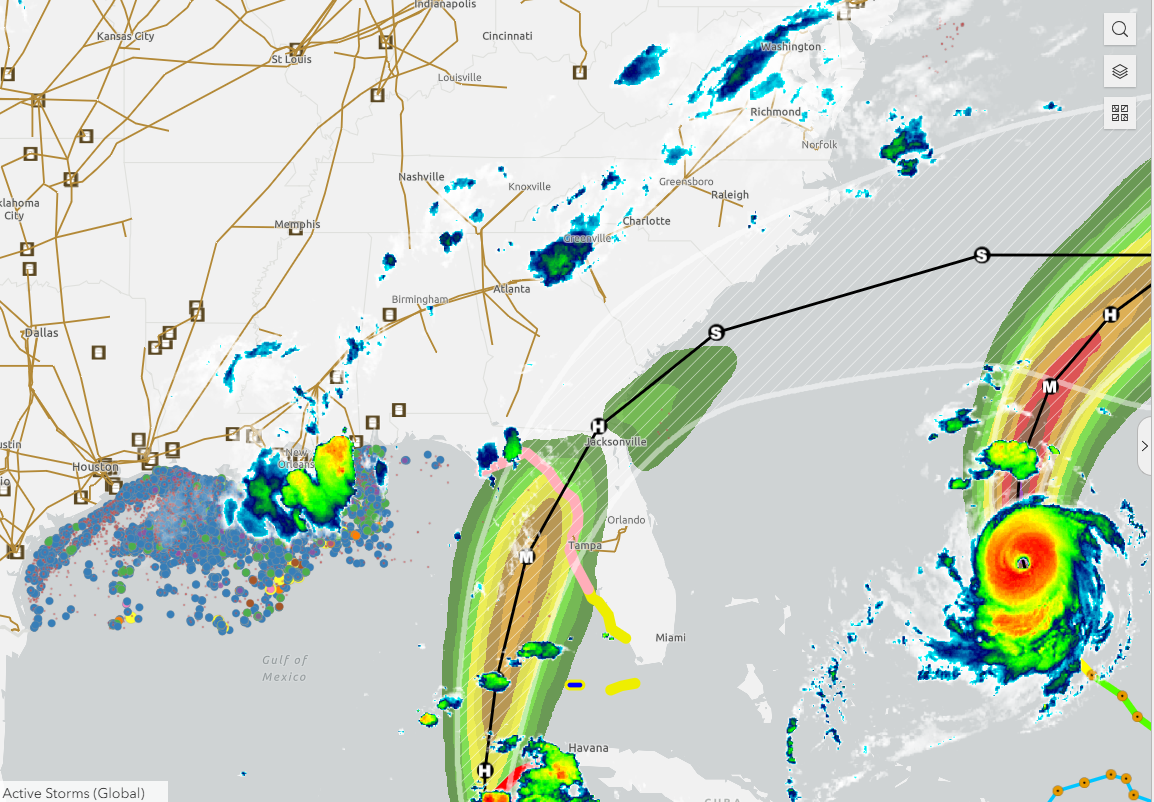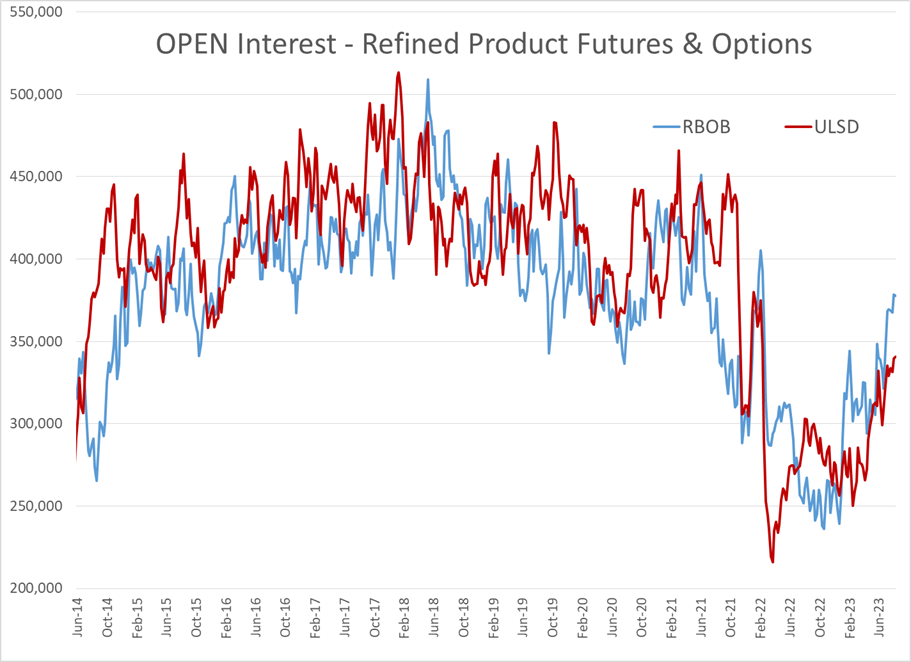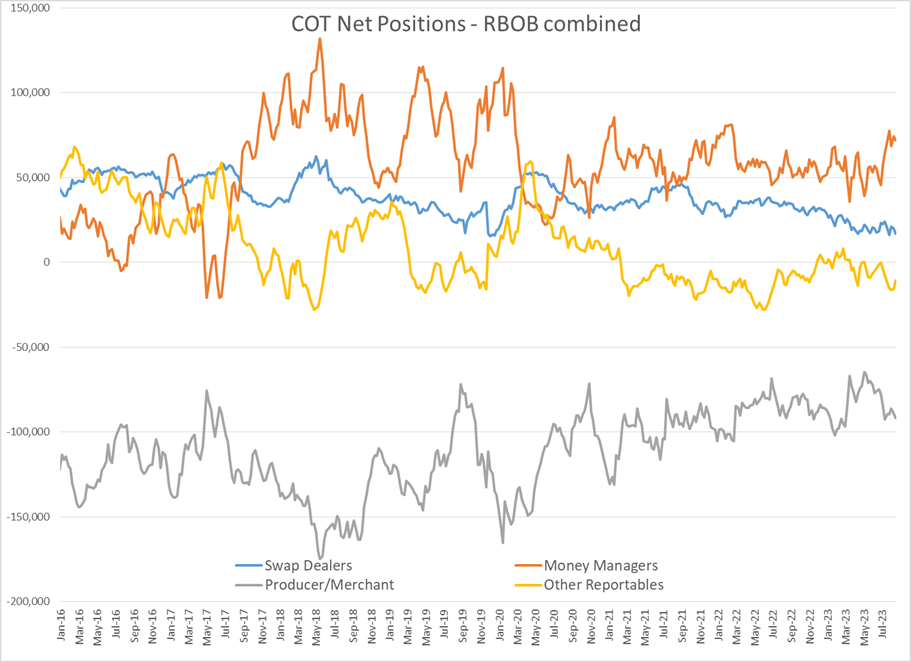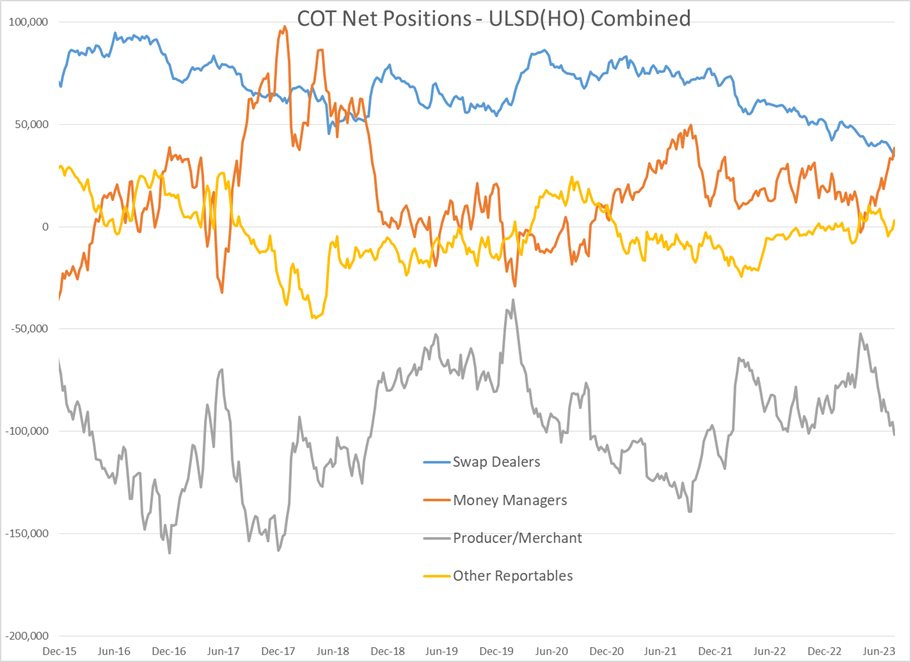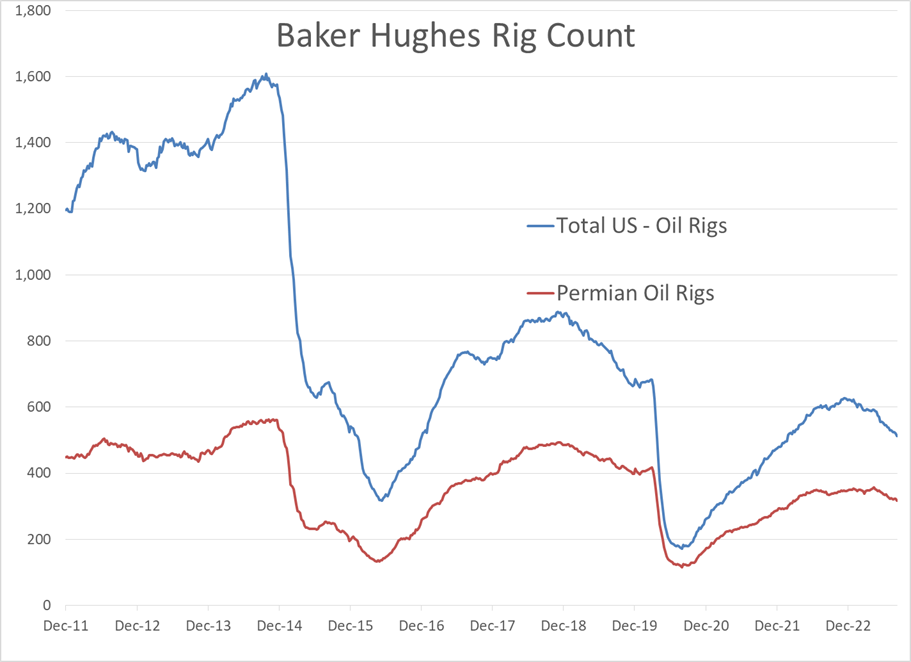Concerns Over Refinery Issues Seemed To Be The Major Theme That Sparked The Rush Of Panic Buying Friday

Energy prices are coming back to reality this morning after a runaway Friday rally got a bit out of control. ULSD futures led the way in both directions, adding 15 cents Friday to hit a new 7 month high at $3.3355, before pulling back by 7 cents this morning as cooler heads seem to be prevailing. Despite that pullback, the strong finish last week keeps the door open for a rally towards the 2023 high of $3.58 as long as prices can sustain their move north of $3.20 this week.
Concerns over refinery issues seemed to be the major theme that sparked the rush of panic buying Friday, although the forecast of a Hurricane reaching the Gulf of Mexico probably didn’t hurt even though it’s not a threat to most energy infrastructure.
The big story was a tank fire at Marathon’s 596mb/day plant in Garyville LA, which is the 3rd largest refinery in the country. Even though the fire was in a storage tank, and not an operating unit, the reports that operations were temporarily suspended as a precaution created a flurry of buying activity just before the settlement Friday. Terminal operations at the plant resumed Friday evening which suggests the fire will not have a lasting impact on operations, which goes a long way to explain the pullback in prices this morning.
Meanwhile, two of the TCEQ frequent flyers both reported upsets Friday. The Valero Mckee refinery reported flaring after a power loss Friday afternoon, which occurred as the facility was attempting to finalize repairs after an upset earlier this month. Marathon’s Galveston Bay facility continues to struggle to go even 1 week without some sort of mishap, this time reporting a fuel oil leak inside a containment dike. Exxon reported an upset at an FCC unit in its Beaumont TX facility overnight that caused brief flaring, but no reported unit shutdowns.
While the headlines were focused on Gulf Coast activities, the biggest price moves Friday were on the West Coast. Both LA and SF diesel basis saw big increases that pushed differentials and outright prices to their highest levels of the year even though the other US spot markets shrugged off the refinery news.
Tropical Storm Idalia formed off the Yucatan peninsula over the weekend and is expected to become a major hurricane before making landfall near Florida’s big bend early Wednesday morning. The storm is far enough east as it moves quickly through the Gulf of Mexico that it’s not a major threat to oil production and refining assets, although we can expect precautionary shutdowns of some offshore wells the next 2 days.
Unlike last year’s Hurricane Ian, which spared the Tampa Bay area with a late shift in its path, this storm looks like it will keep Tampa on the eastern side meaning it will be pushing water inland which could be trouble for the terminals around the bay which are right on the water’s edge. Unfortunately, another type of storm at a local terminal has complicated efforts to fill up customer tanks ahead of this system.
Hurricane Franklin has reached Major hurricane status this morning but is staying roughly 500 miles off of the East Coast as it makes its way north and does not appear to be a direct threat to land, although its high winds and waves could cause some challenges for vessels in the area. There’s another storm system given 50% odds of developing this week by the NHC off the West Coast of Africa, but it looks like it will be far enough north that it should stay out to sea.
Money managers reduced their speculative length (bets on higher prices) on most energy contracts last week with WTI, Brent, RBOB and Gasoil contracts all seeing declines. ULSD prices were the exception with new length added and old shorts reduced, pushing net length up by 17% on the week to a 22-month high. Open interest in refined products continues to increase with ULSD positions now at their highest level in 18-months.
Baker Hughes reported another large decline in the US drilling rig count with a net decrease of 8 oil rigs and 2 natural gas rigs last week. That decline brings the total count to a fresh 18 month low.
Click here to download a PDF of today's TACenergy Market Talk.
News & Views
View All
Energy Prices Found A Temporary Floor After Hitting New Multi-Month Lows Wednesday
Energy prices found a temporary floor after hitting new multi-month lows Wednesday morning as a rally to record highs in US equity markets and a modestly bullish DOE report both seemed to encourage buyers to step back into the ring.
RBOB and ULSD futures both bounced more than 6 cents off of their morning lows, following a CPI report that eased inflation fears and boosted hopes for the stock market’s obsession of the FED cutting interest rates. Even though the correlation between energy prices and equities and currencies has been weak lately, the spillover effect on the bidding was clear from the timing of the moves Wednesday.
The DOE’s weekly report seemed to add to the optimism seen in equity markets as healthy increases in the government’s demand estimates kept product inventories from building despite increased refinery runs.
PADD 3 diesel stocks dropped after large increases in each of the past 3 weeks pushed inventories from the low end of their seasonal range to average levels. PADD 2 inventories remain well above average which helps explain the slump in mid-continent basis values over the past week. Diesel demand showed a nice recovery on the week and would actually be above the 5 year average if the 5% or so of US consumption that’s transitioned to RD was included in these figures.
Gasoline inventories are following typical seasonal patterns except on the West Coast where a surge in imports helped inventories recover for a 3rd straight week following April’s big basis rally.
Refiners for the most part are also following the seasonal script, ramping up output as we approach the peak driving demand season which unofficially kicks off in 10 days. PADD 2 refiners didn’t seem to be learning any lessons from last year’s basis collapse and rapidly increased run rates last week, which is another contributor to the weakness in midwestern cash markets. One difference this year for PADD 2 refiners is the new Transmountain pipeline system has eroded some of their buying advantage for Canadian crude grades, although those spreads so far haven’t shrunk as much as some had feared.
Meanwhile, wildfires are threatening Canada’s largest oil sands hub Ft. McMurray Alberta, and more than 6,000 people have been forced to evacuate the area. So far no production disruptions have been reported, but you may recall that fires in this region shut in more than 1 million barrels/day of production in 2016, which helped oil prices recover from their slump below $30/barrel.
California’s Air Resources Board announced it was indefinitely delaying its latest California Carbon Allowance (CCA) auction – in the middle of the auction - due to technical difficulties, with no word yet from the agency when bidders’ security payments will be returned, which is pretty much a nice microcosm for the entire Cap & Trade program those credits enable.

Week 19 - US DOE Inventory Recap

Another Wave Of Selling Pushed Energy Futures To Fresh Multi-Month Lows On Tuesday
The search for a bottom continues after another wave of selling pushed energy futures to fresh multi-month lows on Tuesday. While most of the futures complex remains on the edge of a technical breakdown, we still haven’t seen the snowball effect of selling that signals the bulls (or more likely their trading algorithms) have finally thrown in the towel.
The most important technical test of the day comes from the RBOB futures contract that managed a modest bounce off of its 200-day moving average Tuesday, and could make a case for a recovery rally if it’s able to sustain a move higher from here. If that layer of support breaks however, there’s not much on the charts to prevent another 20 cents of losses.
We’re seeing a bit of the opposite reaction this morning to the May CPI report that came in just below expectations than we did yesterday when the PPI report showed inflation was still running hot. Both refined products added a penny in the first few minutes following the report, tagging along with a bounce in US equity futures. The annual inflation rate from the CPI came in at 3.4%, which is still well above the FED’s target of 2%, but the monthly rate of .3% was slightly lower than many estimates around .4%. Both the PPI and CPI reports showed the spring rally in fuel prices leading the tick up in inflation, which give us good reason to believe we’ll see lower numbers in June now that both gasoline and diesel futures have dropped 40 cents from their April highs.
ULSD futures hit their lowest level since July 5th of last year, which was just before the contract rallied more than $1/gallon in the next two months. Physical traders are also acting bearish on diesel contracts with more heavy selling in the LA and Group 3 markets which dropped to 14 cent discounts to futures Tuesday, but were left in the dust by Chicago values that collapsed to a 30 cent discount.
The latest crash in Chicago diesel basis combined with futures trading near a 10 month low pushed cash prices to the lowest level we’ve seen since December 2021, offering a seasonally unusual opportunity for those that are still waiting to lock in their fuel price for the next year.
The diesel overhang is also witnessed in the ongoing collapse in California LCFS credit values which reached an 8 year low Tuesday at $45/MT yesterday, down from $140/MT just over 2 years ago. The drop in LCFS values combined with last year’s collapse in RINs and the upcoming change to the blender’s tax credit has already caused the closure of a few biodiesel plants, a re-conversion of a refinery back to traditional fuels, and then Tuesday the world’s largest RD producer issued a profit warning due to a continued decrease in both diesel prices, and the subsidies for renewables. For those that lived through the early days of the ethanol industry that included multiple cycles of bankruptcies and frequent regulation changes wreaking havoc, this cycle on the diesel side of the barrel feels oddly similar.
The IEA continues to bang a bearish drum to try and counteract OPEC’s bullishness in their monthly reports, citing weak demand in Europe as a driver of OECD nations moving into fuel consumption contraction in the first quarter of 2024. The tax-payer funded agency also acknowledged the drop in refinery margins in April as the distillate glut continues across much of the world, while also noting that refinery run rates are set to increase further in the back half of the year. The report also noted that even if OPEC & Friends (now Rebranded as DoC) maintain their output cuts through 2025, growth in output from the US, Guyana, Canada and Brazil will be enough to keep world supply outpacing demand.
RIN prices got a quick bounce this week after a Federal Court denied a refinery suit against the EPA’s RFS rules for 2020-2022, but already gave back those gains yesterday, with D4 and D6 values holding around the $.45/RIN mark, down slightly from this time last year when they were worth about $1.50.
Click here to download a PDF of today's TACenergy Market Talk.
